Svalbard And Its Rapidly Disappearing Glaciers – Groundbreaking Research
Eddie Gonzales Jr. – MessageToEagle.com – Svalbard is one of the fastest-warming places on Earth.
Previously known as Spitsbergen or Spitzbergen, Svalbard is a Norwegian archipelago in the Arctic Ocean. North of mainland Europe, it lies about midway between the northern coast of Norway and the North Pole.
Picture of Longyearbyen with a view of the Adventfjord. Image credit: Michael Haferkamp – CC BY-SA 3.0
A new study reveals alarming glacier shrinkage in Svalbard, a global warming hotspot, over the past 40 years, with the most significant retreat occurring recently.
The research, led by the University of Bristol and published in Nature Communications, shows the vast majority (91%) of glaciers across Svalbard in the Arctic have been significantly shrinking. Findings revealed an area loss of more than 800 km2 at the glacier margins in this Norwegian group of islands since 1985.
The study also found that more than half of the glaciers (62%) undergo seasonal cycles in glacier calving – when large chunks of ice break away due to higher ocean and air temperatures.
Lead author Dr Tian Li, Senior Research Associate at the University’s Glaciology Centre, said: “The scale of glacier retreats over the past few decades is astonishing, almost covering the entire Svalbard. This highlights the vulnerability of glaciers to climate change, especially in Svalbard, a region experiencing rapid warming up to seven times faster than the global average.”
The research team deployed Artificial Intelligence (AI) to quickly identify glacier patterns across large areas. Using a novel AI model, they analysed millions of satellite images capturing the end positions of glaciers across the entire Svalbard.
The findings provide an unprecedented level of detail into the scale and nature of glacier loss in this region. The biggest spike in glacier retreats was detected in 2016, when the calving rates were double the average between 2010 and 2015, in response to extreme warming events.
“This was likely caused by a large-scale weather pattern called atmospheric blocking that can influence atmospheric pressures,” Dr Li said.
“With the increasing frequency of atmospheric blocking and ongoing regional warming, future retreats of glaciers are expected to accelerate, resulting in greater glacier mass loss. This would change the ocean circulation and marine life environments in the Arctic.”
Svalbard is one of the fastest-warming places on Earth. The low altitude of the archipelago’s ice fields and geographical location in the high North Atlantic make it especially sensitive to climate change.
Co-author Jonathan Bamber, Professor of Glaciology at the University of Bristol, said: “Glacier calving is a poorly modelled and understood process that plays a crucial role in the health of a glacier. Our study provides valuable insights into what controls calving and how it responds to climate forcing in an area at the frontline of global warming.”
Written by Eddie Gonzales Jr. – MessageToEagle.com Staff Writer
Related Posts
-
 A New Mechanism To Explain How Continents Stabilized
No Comments | May 14, 2024
A New Mechanism To Explain How Continents Stabilized
No Comments | May 14, 2024 -
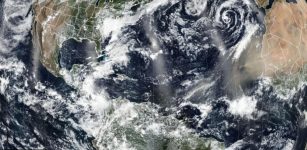 How Saharan Dust Regulates Hurricane Rainfall
No Comments | Jul 25, 2024
How Saharan Dust Regulates Hurricane Rainfall
No Comments | Jul 25, 2024 -
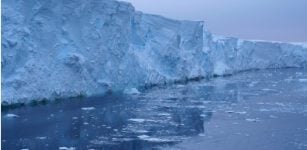 Substantial Withdrawal Of Glaciers In West Antarctica Likely Started As Early As The 1940s – New Study
No Comments | Feb 29, 2024
Substantial Withdrawal Of Glaciers In West Antarctica Likely Started As Early As The 1940s – New Study
No Comments | Feb 29, 2024 -
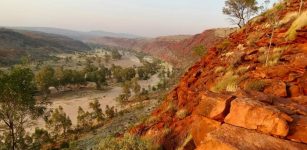 Lithospheric Oddities May Be Sculpting Continental Interiors
No Comments | Aug 22, 2024
Lithospheric Oddities May Be Sculpting Continental Interiors
No Comments | Aug 22, 2024 -
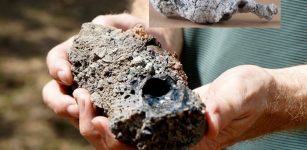 New Phosphorus Material After Lightning Strike – Discovered
No Comments | Apr 12, 2023
New Phosphorus Material After Lightning Strike – Discovered
No Comments | Apr 12, 2023 -
 How Dangerous Is Great Salt Lake Dust? New Research Seeks Clues
No Comments | Sep 9, 2024
How Dangerous Is Great Salt Lake Dust? New Research Seeks Clues
No Comments | Sep 9, 2024 -
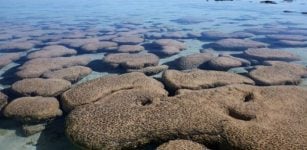 Researchers Defend Their Theory That Molecular Oxygen Existed On Earth 2.5 Billion Years Ago
No Comments | Apr 15, 2023
Researchers Defend Their Theory That Molecular Oxygen Existed On Earth 2.5 Billion Years Ago
No Comments | Apr 15, 2023 -
 Tool Predicts Rogue Waves Up To Five Minutes In Advance
No Comments | Jul 22, 2024
Tool Predicts Rogue Waves Up To Five Minutes In Advance
No Comments | Jul 22, 2024 -
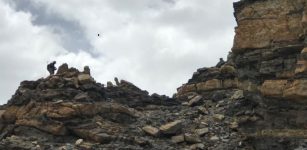 Solar Radiation Can Affect The Earth’s Deep Interior
No Comments | Jul 26, 2024
Solar Radiation Can Affect The Earth’s Deep Interior
No Comments | Jul 26, 2024 -
 Reconstruction Of Antarctic Glaciers Using 1, 000 Historical Photos To Show Pre-Collapse State
No Comments | Jul 9, 2024
Reconstruction Of Antarctic Glaciers Using 1, 000 Historical Photos To Show Pre-Collapse State
No Comments | Jul 9, 2024

